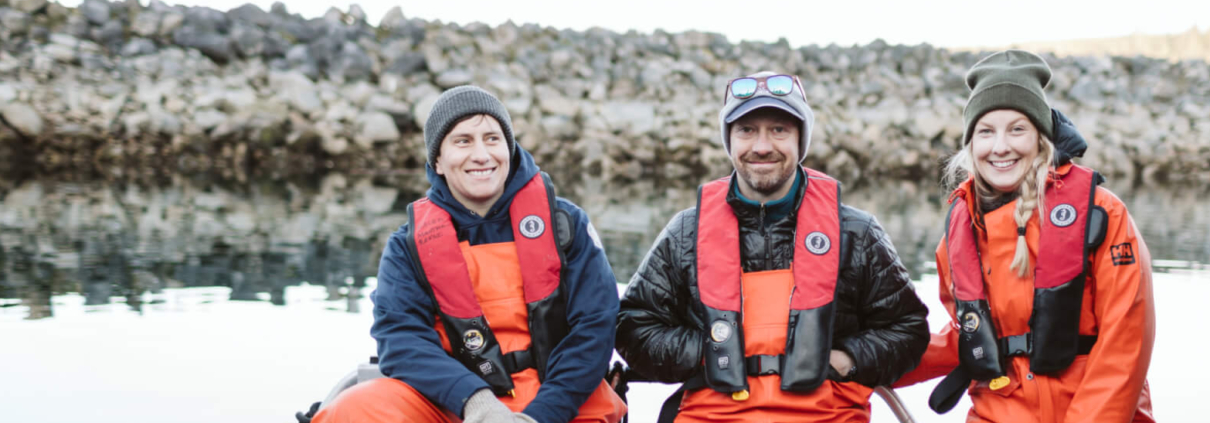A year in review: PSF’s top 10 highlights of 2022
The Pacific Salmon Foundation (PSF) had a busy year thanks to support from partners, donors, readers, and hundreds of volunteers across B.C. and the Yukon. PSF with partners old and new made considerable progress in 2022 to advance critical salmon research, conservation efforts, and habitat restoration projects. This work is a reason to have hope for the future of Pacific salmon.
While salmon face countless struggles – climate change, habitat loss, pollution, and more – PSF is optimistic thanks to the growing community of People for Salmon who come together to help at-risk species recover and ensure that these resilient fish can thrive.
As we reflect on a busy year, join us in celebrating the progress made in 2022.
1. Bottlenecks to Survival
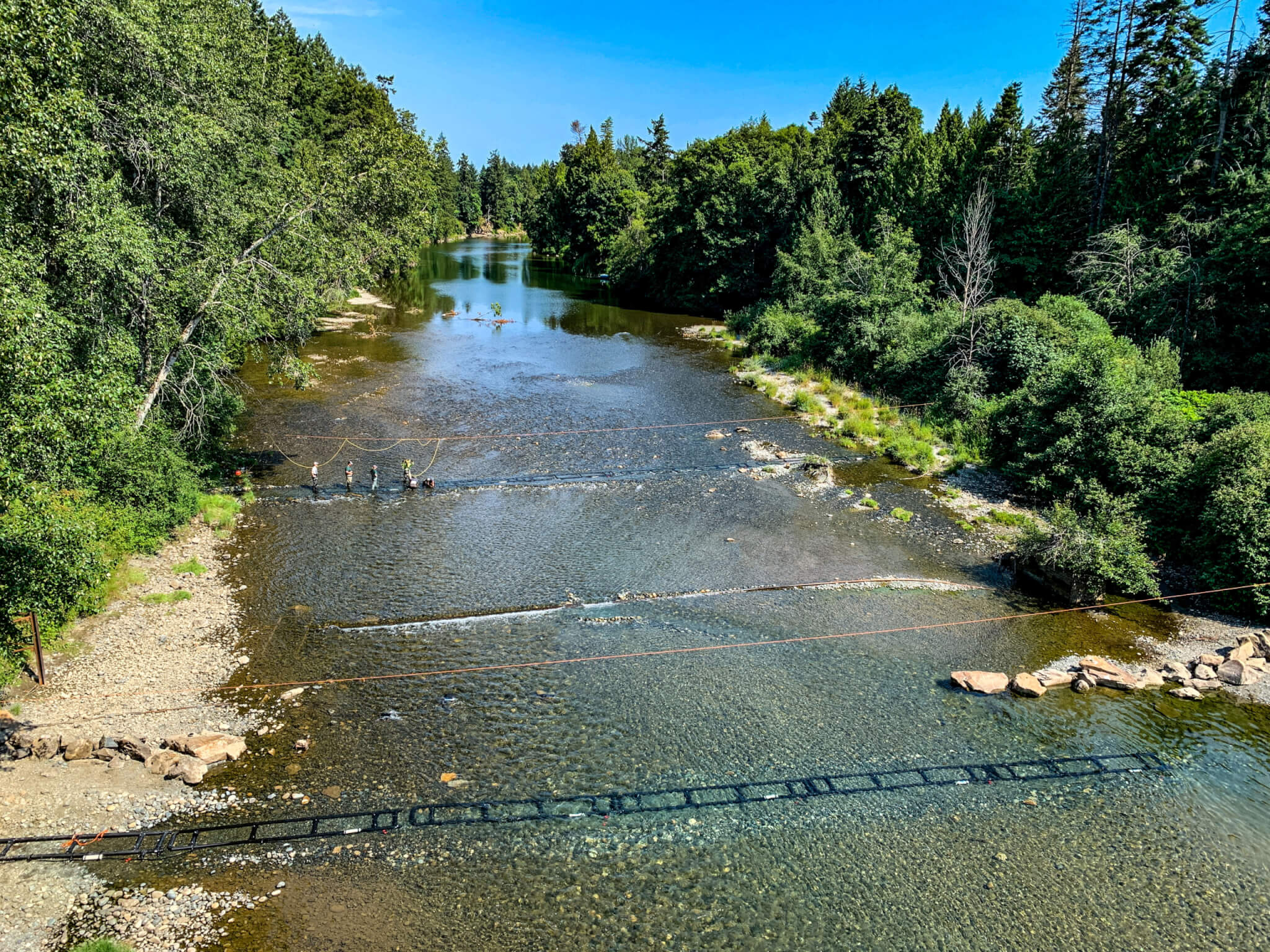
Team members from PSF and BCCF installing a PIT antenna-array system in the Nanaimo River for the Bottlenecks project in Cedar, B.C. Photo by Danny Swainson.
PSF and the British Columbia Conservation Foundation (BCCF) are investigating survival bottlenecks for salmon and steelhead throughout the Salish Sea. The project involves tagging fish with small Passive Integrated Transponder (PIT) tags, which are automatically read by array stations as tagged fish swim near them. To date, PSF and BCCF have set up 10 river arrays and three enhanced monitoring stations across Vancouver Island and tagged more than 100,000 fish!
2. Strait of Georgia Marine Reference Guide launches
The Strait of Georgia Marine Reference Guide is a new open-sourced tool of PSF’s Strait of Georgia Data Centre. The Marine Reference Guide, launched in the spring of 2022, centralizes and visualizes more than 400 data layers relevant to the Strait’s marine ecosystem into one digital library. Use the tool to plan a sustainable boat trip, compare shoreline sensitivity to sea-level rise in different regions, locate salmon spawning habitat areas, and more.
3. Pacific Salmon Explorer Expands
PSF added Haida Gwaii and the Columbia River region to the Pacific Salmon Explorer (PSE) – an online data visualization tool developed by PSF’s Salmon Watersheds Program that provides snapshots of salmon populations and current human and environmental pressures on their freshwater habitats. The PSE presents the best publicly-available data on salmon in B.C. With the additions, the PSE now includes data and assessments for 90 per cent of salmon across the province. By March 2024, the PSE will include data on steelhead and will add the Northern Transboundary region. Data synthesis and outreach is also underway for the Yukon region.
4. New Thompson-Shuswap Data Explorer tool
The Salmon Watersheds Program published the Thompson-Shuswap Salmon Collaborative (TSSC) Data Explorer. The TSSC Data Explorer is an interactive GIS-based application that identifies all known spawning habitats for Pacific salmon species in the Thompson-Shuswap watershed. The mapping tool includes information on development pressures on fish habitats, fish passage challenges, water allocation issues, pollution, and other factors that may be important for informing salmon habitat management or restoration planning.
5. The Central Squamish Estuary Restoration Project
PSF’s Community Salmon Program (CSP), launched in 1989, distributed more than $1.3 million in 2022 to 161 unique salmon conservation, research, enhancement, and habitat restoration projects across B.C. and the Yukon.
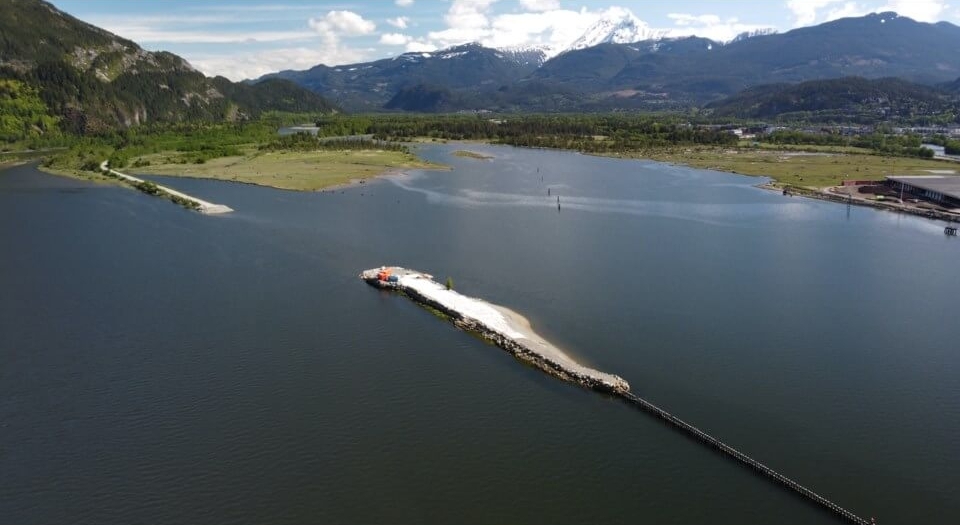
Squamish estuary restoration site. Photo by John Buchanan.
The Central Squamish Estuary Restoration Project is a CSP-supported initiative that was developed in partnership with Squamish Nation, the Squamish River Watershed Society, and Fisheries and Oceans Canada (DFO) with the common goal of restoring declining Chinook salmon populations. The focus is to reconnect the waters of the Squamish River to the estuary by opening up the lower spit and providing access once again to the estuary to out-migrating juvenile Chinook and other salmonids. The partners modified 300 metres of the spit this year. Next year’s efforts will focus on modifying the remaining 550 metres to eventually create an 850-metre opening.
6. Lower Fraser Collaborative Table
The Lower Fraser Collaborative Table – with membership from 23 First Nations represented by the Lower Fraser Fisheries Alliance, seven recreational fishing organizations, and commercial fishers – fosters a dialogue around the shared salmon resource of the Lower Fraser. Supported by PSF, DFO, and the province of B.C., the group developed and ratified its three-year strategic plan, which was achieved in June 2022. The process aims to support salmon and other species in the Lower Fraser through conservation, sustainable access for harvesting, and improved communication.
7. Salmon Health
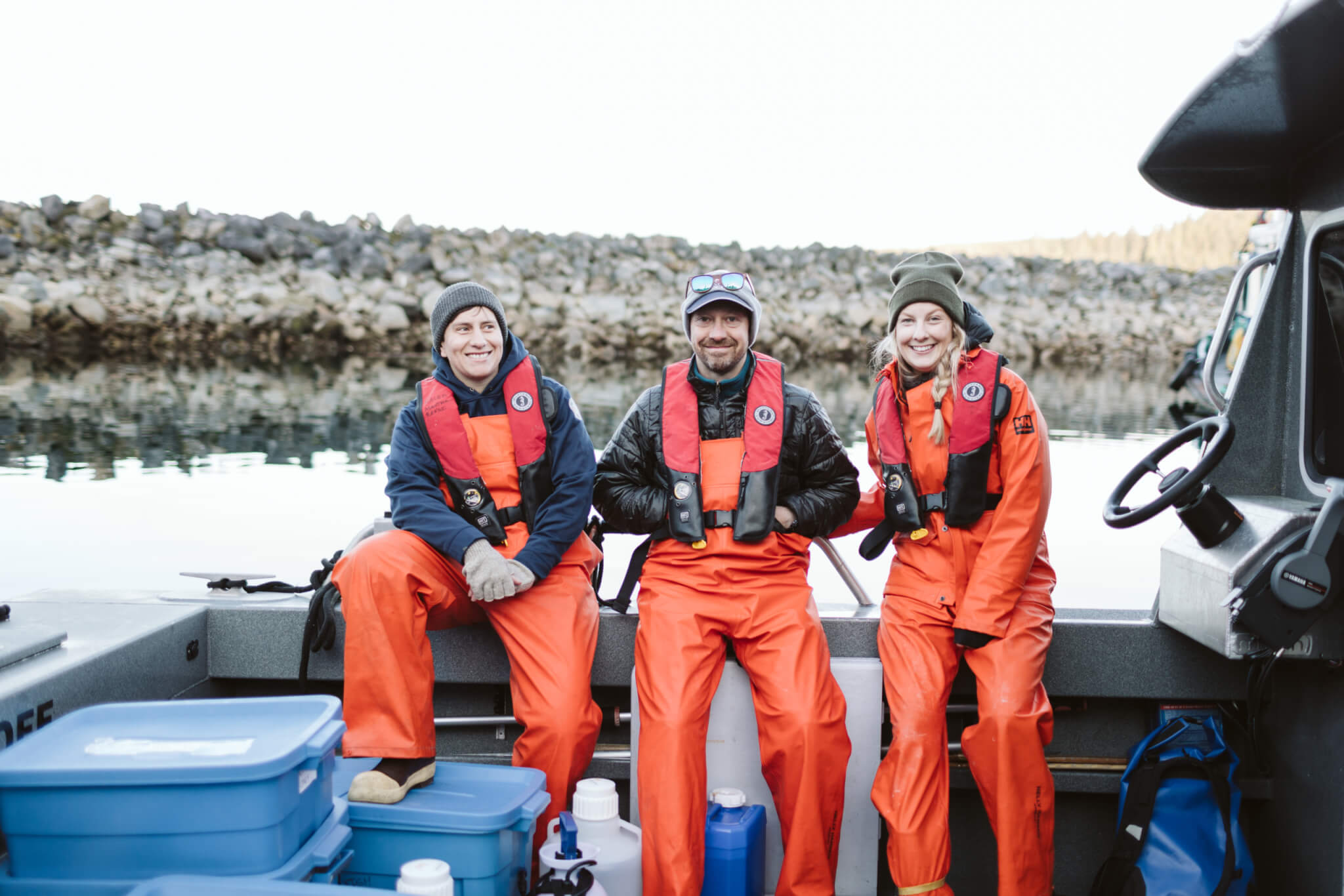
Left to right: Kaleb Mantha-Rensi, Emiliano Di Cicco, and Kayla Zielke from PSF’s Salmon Health research team in the field in the Boughton Archipelago.
Thanks to a $450,000 donation from the North Family Foundation, led by long-time salmon advocates Rudy and Patricia North, PSF launched the Salmon Health Program in 2022. The program builds on the organization’s track record and expertise in researching the impacts of pathogens from open net-pen fish farms on the health of wild Pacific salmon by producing independent, peer-reviewed science. PSF’s Salmon Health Program published two research papers this year that help shed light on the impact disease may have on wild salmon in B.C.
8. Fraser River migration impediment study
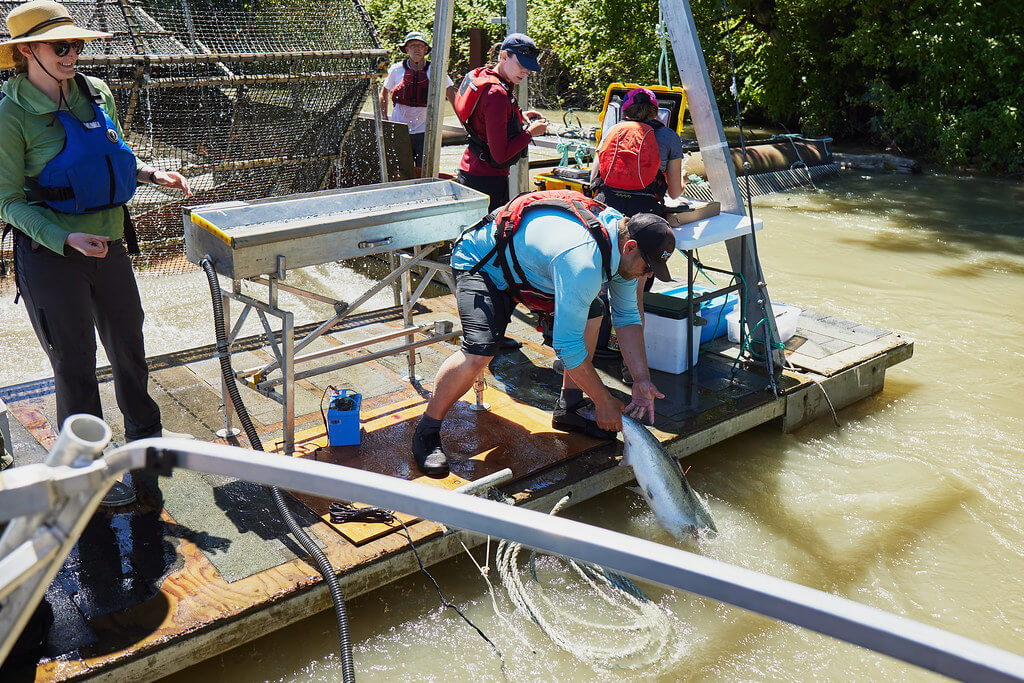
Releasing an adult Chinook back into the Fraser River after tagging it at the fish wheel operated by Matsqui First Nation.
Fraser River Chinook salmon have experienced declines for many years. As a result, at least 15 of the 17 wild populations of Fraser Chinook are considered at risk. A partnership between PSF, Matsqui First Nation, Yale First Nation, and DFO is tagging adult Chinook salmon and tracking their migration to identify potential locations where the fish face impediments as they journey to their spawning grounds. They tagged 98 adult Chinook salmon in 2022, the second year of this project.
9. Salmon-first flood recovery progress
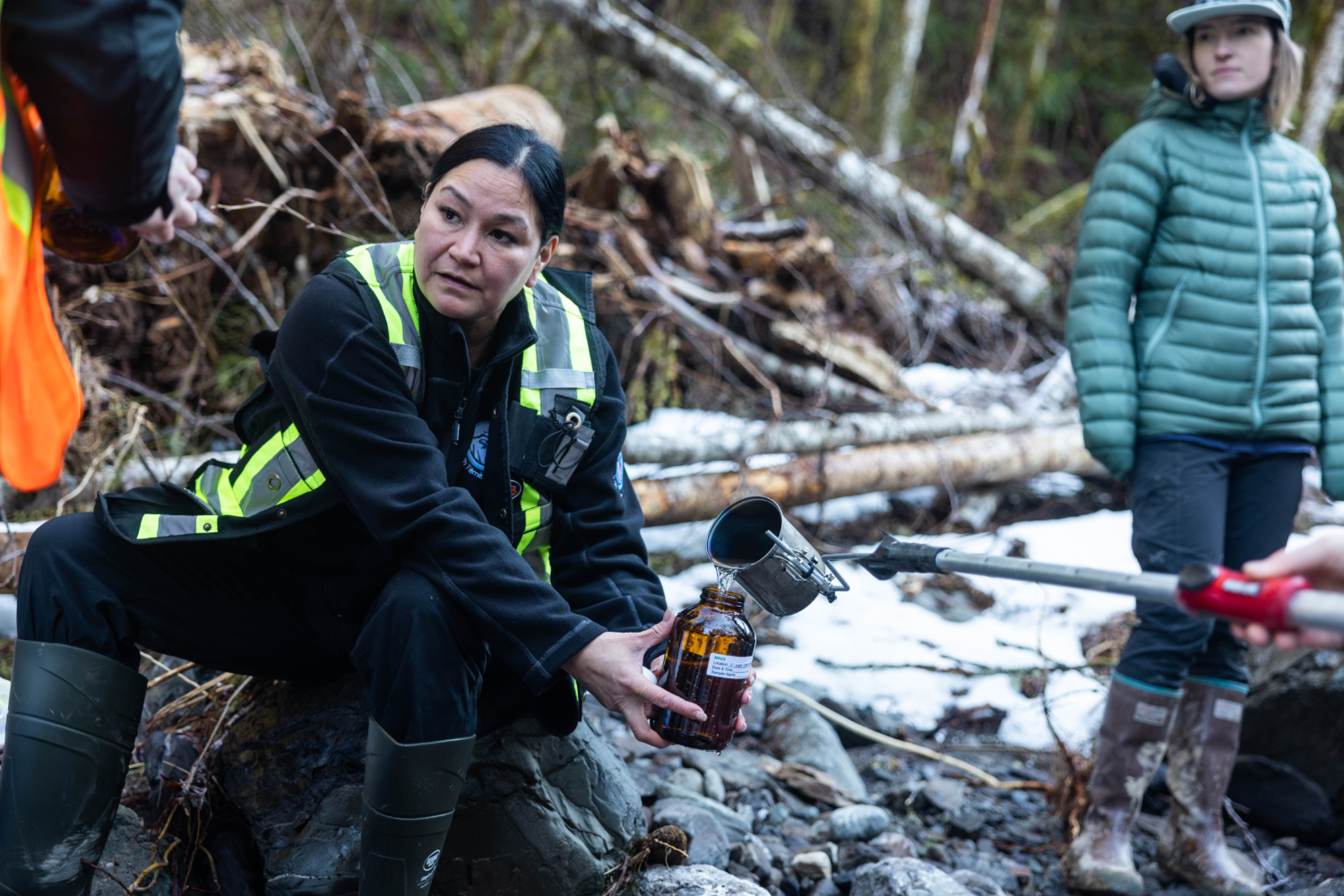
On Nov. 17, 2021, catastrophic flooding in B.C. left Pacific salmon stranded in agricultural fields and vital spawning habitat in need of immediate repair. PSF with partners enacted fish rescue efforts and habitat channel re-connection projects in the urgent weeks after the flooding, as well as ongoing, long-term habitat recovery initiatives. Some of the projects completed in 2022 include removing a log jam that blocked salmon from reaching their spawning grounds, releasing a study on post-flood water contaminants, removing sediment and debris from a buried salmon-bearing creek, and more.
10. PSF recruits Mr. Brown

Mr. Brown, resident “spokesbear,” joined PSF as a salmon expert this year. Mr. Brown is the face of PSF’s awareness campaign, which aims to galvanize diverse community support for PSF and Pacific salmon. Mr. Brown’s light-hearted ads successfully helped recruit new supporters.
Thank you to all PSF supporters for making this work possible. This year, PSF also hosted a successful B.C. Wild Salmon Day, returned to in-person fundraising events, crowdsourced more than 80 locations for our Salmon Spotting map, supported the Salute to the Sockeye festival at the Adams River, launched the Pacific Salmon Action Dialogue Series with First Nations Fisheries Council of B.C., and more. This work advances PSF’s mission to save and restore wild Pacific salmon and we couldn’t do it without you.
With 2023 around the corner, we look forward to making further progress on PSF’s programs and projects alongside our passionate community of People for Salmon.

